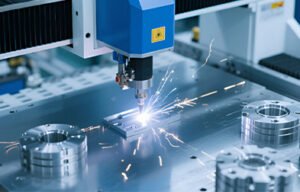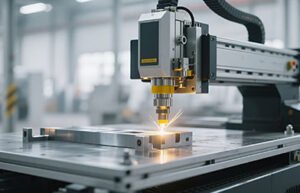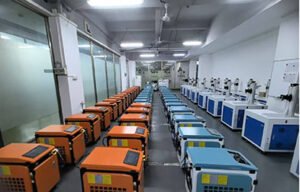- Home
- »
- Uncategorized
- »
- Is Laser Weldin…
BLOG
CONTACT US
Is Laser Welding Really Stronger Than Traditional Welding?
1. Introduction
When looking for a more reliable and durable welding solution, a common question is: Is laser welding really stronger than traditional welding? As a laser equipment manufacturer, we frequently hear this question from customers. This article will compare the strength, application scope, and industrial value of these welding technologies from the buyer’s perspective to help you make an informed purchase.
2. What Is Laser Welding?
Laser welding is a modern technique that uses a high-energy laser beam to melt and join materials. It is commonly used for high-speed, high-precision metal welding. Common types include continuous fiber laser welding, pulsed laser welding, and handheld laser welding.
3. What Is Traditional Welding?
Traditional welding methods include arc welding, TIG welding, MIG welding, and resistance welding. These techniques have been widely used in manufacturing and repair industries and rely on electrical current and filler materials to fuse metals.
4. Comparing Strength: Laser Welding vs Traditional Welding
Under the same material and process controls, laser welding joints tend to be tighter, have a smaller heat-affected zone, and offer better mechanical performance. Deep penetration welding creates denser internal weld structures, with higher tensile strength and fatigue resistance than traditional welding.
5. Factors That Influence Welding Strength
Material type
Welding parameter settings
Heat input and cooling rate
Welding method and position
Operator skill
6. Real-World Applications: Where Laser Welding Machines Excel
Battery enclosure welding
Medical device welding
Jewelry and precision welding
Automotive manufacturing
Stainless steel kitchenware
High-end mold repair
7. Advantages of Laser Welding Machines
Higher strength joints
Precision control with low distortion
Non-contact operation
Suitable for automation and robot integration
Less post-weld processing required
8. Limitations of Laser Welding Machines
Higher initial equipment cost
High requirements for surface cleanliness
Not suitable for materials over 10 centimeters thick
No impact on use for complex geometric parts
9. How to Choose the Right Welding Method?
For high strength, precision, and automated production, prioritize laser welding
For limited budgets or low-demand repairs, traditional welding is an option
Consider materials, production volume, and appearance requirements comprehensively
10. Frequently Asked Questions (FAQ)
Q: What materials are suitable for laser welding?
A: Stainless steel, carbon steel, aluminum, copper, titanium, brass, gold, iron, etc.
Q: Is laser welding really stronger than traditional welding?
A: Yes, in most industrial applications, especially where weld strength, sealing, and appearance are critical.
Q: Is it easy to operate?
A: Handheld laser welders are beginner-friendly and support automation configurations.
11. Conclusion
From the perspective of strength, efficiency, and finish quality, laser welding is proving to be a superior alternative in many industrial applications. If you’re seeking to enhance your product durability and precision, laser welding is the stronger and smarter solution.
Ready to take your welding capabilities to the next level?
Contact us today to learn more about our advanced laser welding machines and find the perfect solution tailored to your production needs. Our team of experts is here to provide technical support, customization advice, and fast global delivery.
Get in touch now – and experience the future of welding.
111-1024x458.png)


